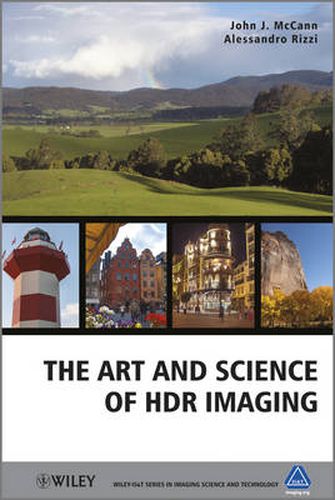Readings Newsletter
Become a Readings Member to make your shopping experience even easier.
Sign in or sign up for free!
You’re not far away from qualifying for FREE standard shipping within Australia
You’ve qualified for FREE standard shipping within Australia
The cart is loading…






Practical implementations of HDR rendering have been available in imaging techniques for more than 500 years, and the book begins with an introduction to the history of the discipline. This covers painting, photography, and electronic imaging that all successfully reproduce scenes with a greater dynamic range of light than available in the reproduction medium. These early chapters also explain how human vision is more interested in the relationship of image pixel values than a pixel’s absolute value, and the importance of spatial image processing. The second part focuses on optics and psychophysics, describing experiments that measure the physical ranges of light that can be recorded by cameras, and detected by humans, and the importance of light distribution in the scene being captured. The third part on vision science describes human responses to HDR images, looking at how the two spatial mechanisms, optical glare and visual contrast, tend to counteract each other. It describes the correlation of appearance and calculated retinal images, explains why image-dependent glare sets the dynamic range of usable HDR information, evaluates whether HDR displays require a new definition of uniform colour spaces, and explores how HDR affects colour appearances. The final part looks at digital imaging, discussing current technological practices. Whilst silver-halide, pixel-based photography presented a challenge to HDR techniques, the development of digital photography and electronic imaging allowed an image to achieve the same effect as human vision. Spatial algorithms can automatically mimic vision and automatically process all images, and these processes are discussed in digital cameras printers, displays, and image processing software and hardware. This book brings together the relevant thinking on the topic, learning from the disparate experiences of artists (painters and photographers), scientists (optics and vision science), imaging engineers (silver-halide film, silicon sensors and camera-, printer- and display-designers), and image processing experts (algorithms and computer hardware).
$9.00 standard shipping within Australia
FREE standard shipping within Australia for orders over $100.00
Express & International shipping calculated at checkout
Practical implementations of HDR rendering have been available in imaging techniques for more than 500 years, and the book begins with an introduction to the history of the discipline. This covers painting, photography, and electronic imaging that all successfully reproduce scenes with a greater dynamic range of light than available in the reproduction medium. These early chapters also explain how human vision is more interested in the relationship of image pixel values than a pixel’s absolute value, and the importance of spatial image processing. The second part focuses on optics and psychophysics, describing experiments that measure the physical ranges of light that can be recorded by cameras, and detected by humans, and the importance of light distribution in the scene being captured. The third part on vision science describes human responses to HDR images, looking at how the two spatial mechanisms, optical glare and visual contrast, tend to counteract each other. It describes the correlation of appearance and calculated retinal images, explains why image-dependent glare sets the dynamic range of usable HDR information, evaluates whether HDR displays require a new definition of uniform colour spaces, and explores how HDR affects colour appearances. The final part looks at digital imaging, discussing current technological practices. Whilst silver-halide, pixel-based photography presented a challenge to HDR techniques, the development of digital photography and electronic imaging allowed an image to achieve the same effect as human vision. Spatial algorithms can automatically mimic vision and automatically process all images, and these processes are discussed in digital cameras printers, displays, and image processing software and hardware. This book brings together the relevant thinking on the topic, learning from the disparate experiences of artists (painters and photographers), scientists (optics and vision science), imaging engineers (silver-halide film, silicon sensors and camera-, printer- and display-designers), and image processing experts (algorithms and computer hardware).